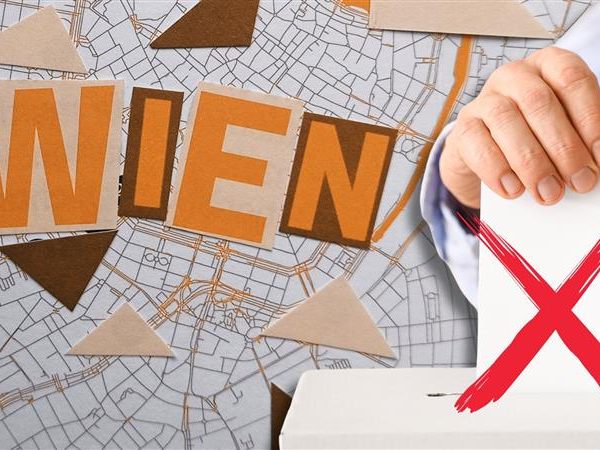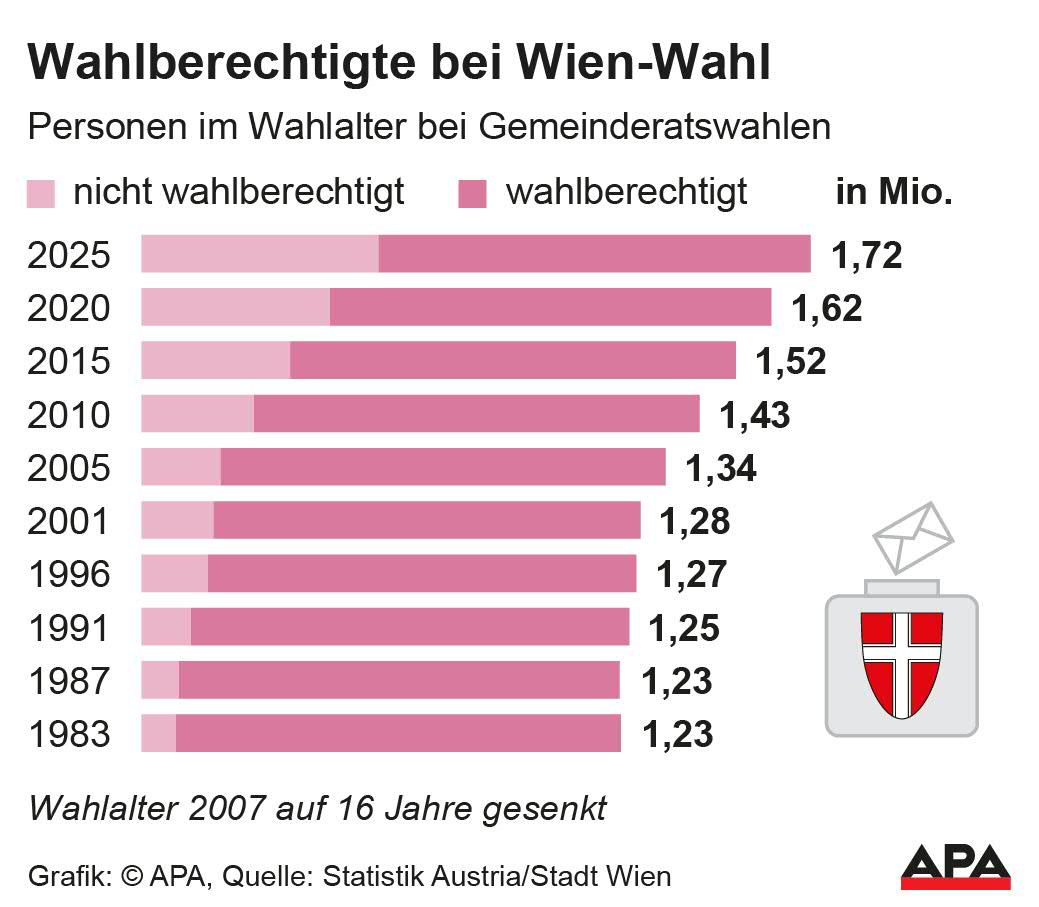```html
Vienna Election: In These Districts Almost Every Second Person Cannot Vote
```

When the Vienna City Council is re-elected on April 27, more than a third of the capital's residents will not be able to participate. More than 35 percent of Viennese of voting age do not have the right to vote due to the lack of Austrian citizenship. The proportion of non-eligible voters, which has been increasing for years, has thus reached a new record high.
610,000 Non-Austrians of Voting Age in Vienna
In recent years, the proportion of eligible voters in the residential population has continuously decreased. In the 1980s, more than 90 percent of adults in Vienna were eligible to vote, but despite lowering the voting age to 16, the proportion fell below 80 percent for the first time in the 2010 election. By the 2015 city council election, more than a quarter of Viennese of voting age were already excluded from voting rights.
Only about 70 percent of people living in Vienna were called to vote in the Vienna City Council election five years ago. In the national election last autumn, the proportion of eligible voters in Vienna fell below the two-thirds mark for the first time, and since then, the proportion has further decreased to now below 65 percent. According to data from Statistics Austria, the approximately 1.1 million eligible voters face around 610,000 non-Austrians of voting age with their main residence in the capital. This corresponds to a share of 35.4 percent, while nationwide, as of January 1, 19.7 percent of those over 16 were not eligible to vote.
EU Citizens Reluctant in Last Vienna Election
More than a third of the non-voters come from the European Union. The approximately 260,000 EU citizens living in Vienna are allowed to participate in district council elections, but unlike in other municipalities, they cannot vote for the city council because it is simultaneously the state parliament in Vienna, and participation in state elections is reserved for Austrian citizens according to the constitution. Although the number of EU foreigners eligible to vote at the district level has been growing for years, their voter turnout is traditionally low. In 2020, only 20.4 percent of eligible voters from other EU countries cast their votes - with an overall voter turnout of 57.7 percent.

Warnings that the increasing proportion of non-voters poses a problem for democracy have been around for years. The organization SOS Mitmensch states that Vienna is on its way to becoming a "half democracy" because, according to their forecast, by 2050 only every second person will be eligible to vote. The NGO, which will once again hold a symbolic "Pass Egal Wahl" ahead of the Vienna election, sees the problem not only in immigration but also in the restrictive access to Austrian citizenship. The new three-party coalition is unlikely to change much in this regard; according to the government program, the requirements for German language skills are to be further tightened. Only for people with urgently needed professions will there be relief in the financial requirements.
Vienna Districts with the Highest Proportion of Non-Voters
Within Vienna, the proportion of non-voters is unevenly distributed: In the district of Rudolfsheim-Fünfhaus, it is highest at 45.9 percent, followed by Favoriten (44.2) and Brigittenau (44.4). At the other end of the spectrum is Vienna-Hietzing with 24.5 percent.
At the neighborhood level, an APA analysis of data from the Vienna state statistics shows that the proportion of non-voters is highest near the Gürtel. In central Favoriten, more than half of those over 16 have no voting rights (53.1), whereas in the neighborhoods in the south of the 10th district (Laaer Berg and Siedlung Südost as well as Ober- and Unterlaa), only 17.1 and 19.8 percent, respectively, are not eligible to vote.
(APA/Red)
This article has been automatically translated, read the original article here.





